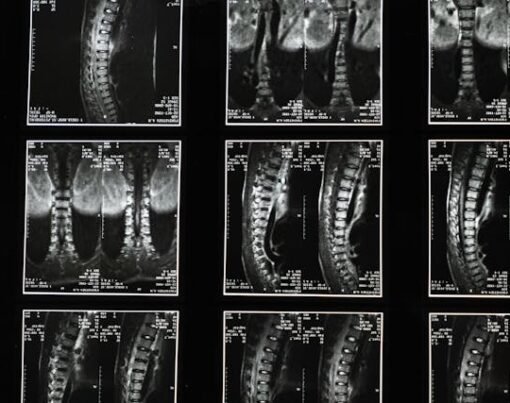Table of Contents
1. The Humble Beginnings: Ancient Dentistry
Dentistry, as a health practice, predates written history. Archaeologists have discovered evidence of dental procedures dating back as far as 7000 BC. These ancient cultures practiced dentistry in rather rudimentary ways, primarily focusing on tooth extraction as a means of alleviating oral pain.
Tooth extraction was the primary dental procedure for many centuries. The Egyptians, for example, had a surprisingly sophisticated understanding of dental problems. They recognized gum diseases and even attempted tooth replacements, albeit with limited success.
2. Middle Ages: Professionalization Begins
As societies progressed into the Middle Ages, the practice of dentistry began to evolve. Unlike the ancient cultures, the Middle Ages saw the birth of dentistry as a recognized profession. However, the focus remained primarily on tooth extraction.
Barbers, who were responsible for all types of surgery at the time, became the pioneers of the dental profession. They developed basic procedures for tooth extraction and even invented devices like the dental pelican, an early instrument used for pulling teeth.
3. The 18th Century: Birth of Modern Dentistry
Fast forward to the 18th century, the era that marked the birth of modern dentistry. French surgeon Pierre Fauchard published ‘The Surgeon Dentist’, considered the first comprehensive guide to dental care, including cavity treatment and tooth replacement.
Fauchard, often regarded as the ‘Father of Modern Dentistry’, introduced the concept of dental fillings and the use of dental prosthesis, shifting dentistry from mere extraction to restoration and conservation of teeth.
4. The 19th Century: Expansion and Education
The 19th century was a period of rapid expansion in the field of dentistry. The profession started to be regulated with formal educational institutions. This century also saw the invention of dental chairs, drills, and the widespread use of anesthetics, making dental procedures more comfortable and efficient.
In the United States, the first dental school, Baltimore College of Dental Surgery, was established in 1840, signifying a significant step towards formal education and licensing for dentists. Dentistry was no longer confined to barber shops but had entered the realm of academia.
5. The Advent of X-Rays
In the late 19th century, Wilhelm Conrad Roentgen discovered X-rays, changing the course of medical history. While not immediately applied in dentistry, X-rays eventually became crucial for dental diagnostics by allowing a non-invasive way to examine oral health.
X-rays allowed dentists to assess the health of teeth and the surrounding tissue accurately. This development opened up the possibility of treating dental conditions before they became serious, shifting the focus from reactive to preventive dental care.
6. Fluoridation Revolution
In the mid-20th century, another game-changer arrived: the advent of fluoride in dentistry. The incorporation of fluoride in drinking water and toothpaste was a massive leap forward in preventive dentistry. Fluoride’s ability to strengthen enamel and prevent tooth decay drastically reduced the prevalence of cavities worldwide.
Following the fluoridation revolution, the focus of dentistry shifted even more towards prevention and oral health education. Dentists, such as those at Elevate Dental, encourage regular check-ups and prophylactic measures, and oral hygiene began to be recognized as a critical aspect of overall health.
7. Dental Implants and Modern Prosthetics
Building on Fauchard’s principles of restoration, the late 20th century introduced dental implants. Per-Ingvar Brånemark, a Swedish orthopedic surgeon, discovered that titanium could integrate into bone tissue, leading to the development of the modern dental implant.
Today, dental implants and prosthetics are widely used, providing a permanent solution to missing teeth. They have revolutionized dentistry by giving individuals a chance to retain their smiles, confidence, and oral function.
8. Cosmetic Dentistry: The Rise of the Perfect Smile
Parallel to the developments in restorative dentistry, cosmetic dentistry also saw a significant rise. Treatments like teeth whitening, veneers, and orthodontics became increasingly popular. This evolution not only changed how people perceived their smiles but also drove technological innovation in dentistry.
Thanks to the digital revolution, modern dentistry offers a range of sophisticated treatments to help patients achieve the perfect smile. From 3D imaging to clear aligners and aesthetic porcelain crowns, the realm of cosmetic dentistry continues to evolve and expand.
9. Digital Dentistry: The Present and Future
The 21st century marked the start of the digital revolution in dentistry. Today, advanced imaging technologies, CAD/CAM systems, and 3D printing are making dental procedures faster, more accurate, and more comfortable for patients.
The advent of digital dentistry has also led to teledentistry, allowing remote patient monitoring and consultation. This technology extends dental care to hard-to-reach communities and facilitates improved patient-dentist communication.
10. Sedation Dentistry: Comfort and Care
Another significant development in dentistry is the growth of sedation dentistry. From the use of nitrous oxide in the 19th century to the application of modern sedatives, this field has evolved to ensure patients have a comfortable and painless dental experience.
Amidst this evolution, some practitioners truly exemplify the dedication to patient comfort and state-of-the-art care. At the forefront of these practices is a leading San Francisco dentist clinic, operated by Dr. Leyli Shirvani and Dr. Maria Rodriguez. Their holistic approach focuses on creating a judgment-free, patient-centric environment, underpinned by excellence and integrity. Not only do they offer preventive and restorative dental services, but they also employ the latest in sedation dentistry techniques to ensure every procedure is as painless and stress-free as possible. It’s this commitment to high-quality, empathetic care that sets them apart in the evolving landscape of dental health.
11. Sustainability in Dentistry
Today’s society is more conscious than ever about sustainability, and this extends to dentistry. Many practices are turning to eco-friendly methods, such as digital X-rays, biodegradable products, and energy-efficient equipment.
In addition to reducing environmental impact, these practices also contribute to patient health and safety. By minimizing exposure to harmful chemicals and reducing waste, sustainable dentistry is emerging as the future of the field.
12. Global Dental Health
The evolution of dental procedures has had a significant impact on global dental health. Advancements in preventive, restorative, and cosmetic dentistry have made it possible for individuals across the world to maintain better oral health and enjoy improved quality of life.
However, access to quality dental care remains a challenge in many parts of the world. Efforts are underway to bridge this gap, with organizations and governments working to make dental care more accessible and affordable.
13. Conclusion: Dentistry’s Ongoing Evolution
Dentistry has come a long way from tooth extraction in ancient times to complex restorative and cosmetic procedures in the modern age. As we look to the future, we see a discipline constantly evolving, shaped by technological advancements, societal changes, and a deeper understanding of oral health’s role in overall well-being. The profession is poised for further innovation, focusing on patient comfort, precision, and globally accessible quality care.










